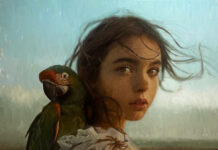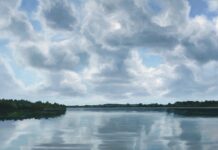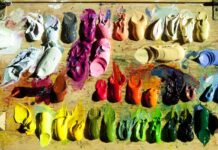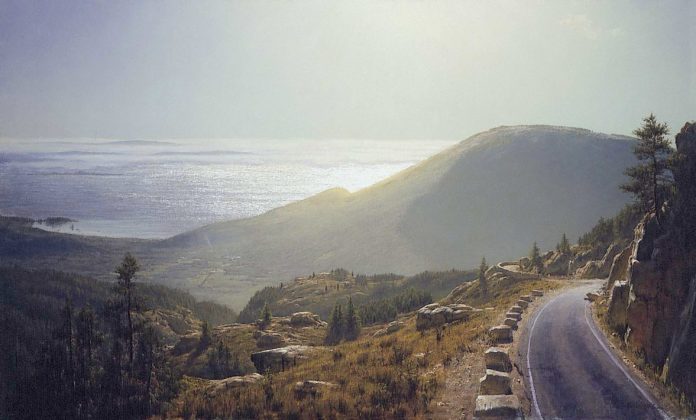
On Painting Realism Landscapes > Joseph McGurl (Painting Light and Atmosphere, PaintTube.TV) doesn’t use photo references; why he works from “my observations, memory and imagination.”
Observation, Memory, and Imagination: Realism Landscapes Without Photography
BY JOSEPH MCGURL
“That looks just like a photograph!”
Many representational artists often hear this “compliment.” There is no doubt that the camera and the brush are rivals for superiority in the creation of two-dimensional images. And most contemporary painters use photos to some extent. Does this matter?
It often depends upon whom you ask.
Though paintings may possess some superficial similarities to photographs, in reality artists who use or don’t use photographs are creating very different kinds of art with different philosophies, methods, and technical requirements. I often hear thoughtful reasoning as to why certain artists work from photographs, but I seldom hear discussions about the philosophical and practical reasons for working without them.
As an artist who does not use any kind of photo reference, I would like to discuss some of the reasons why it is better for me to reach my goals by working only from my observations, memory and imagination. Because art is such an individual endeavor, it is impossible for an artist to speak from an impersonal viewpoint, so I hope you will indulge me as I speak from my personal perspective, and trust that it will contain some universal truths.
It is also wonderful that artists disagree with each other about philosophy and methods. If we all agreed with each other, all art would look the same, and it would be a very boring art world indeed. I say this because it is important to realize that my goals are different from artists who do use photography, and I am not applying my goals and values to their art-making process.
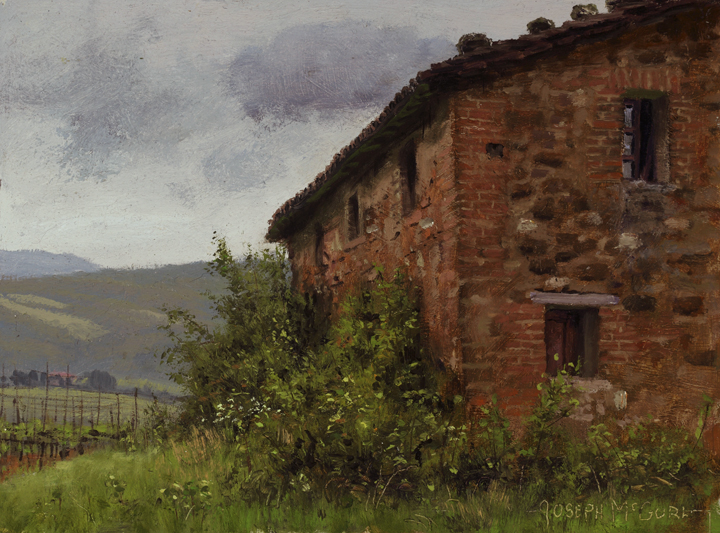
The plein air sketch forms the basis of all of my art making. Despite the fact that many of my studio paintings are completely imagined scenes, they are informed by and based upon thousands of these sketches painted over a 30-year period. Working this way has required a significant amount of time meditating upon, observing, and desperately struggling to interpret nature in paint.
Knowing that the only reference for developing subsequent studio paintings is what I have studied and painted on site encourages me to dig in and fight for every bit of information I can grasp before I leave the field. Because I am usually able to render the scene before me with enough fidelity to meet my needs, a photo to make corrections is not necessary. Plein air painting without photographic reference as a backup is similar to that old cliché of walking a tightrope without a net. It compels one to concentrate at the highest levels.
I am attracted to the purity and also to the challenge of sitting in a field with only my paints and my wits trying to record the entire experience. I am a painter, not a painter/photographer, and referring to a photograph would, for me, place too much emphasis on the end-product rather than the process.
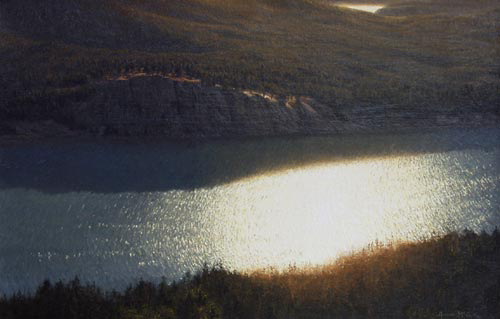
In an age dominated by technology, it is important for me to keep my art handmade with its attendant flaws and minimal technological intrusion. I suspect this minimalist approach would make me a counter-revolutionary in the eyes of the art establishment. However, I don’t reject technology just because it is technology. My philosophy is similar to the Amish in this regard—if a particular technology doesn’t help me reach my goals, it is unnecessary, and I don’t want to invite it into my art-making process.
Time spent in the field has also allowed me to expand my imagination and creativity because it has forced me to develop a large storehouse of knowledge that can be drawn upon to create completely imaginary landscapes. Artists working in this manner will become visual botanists, meteorologists, geologists, biologists, architects, physicists, etc. They will be able to recreate environments in a convincing way and not be limited by the availability of reference photographs. This gives great freedom to completely invent and rearrange subject matter.
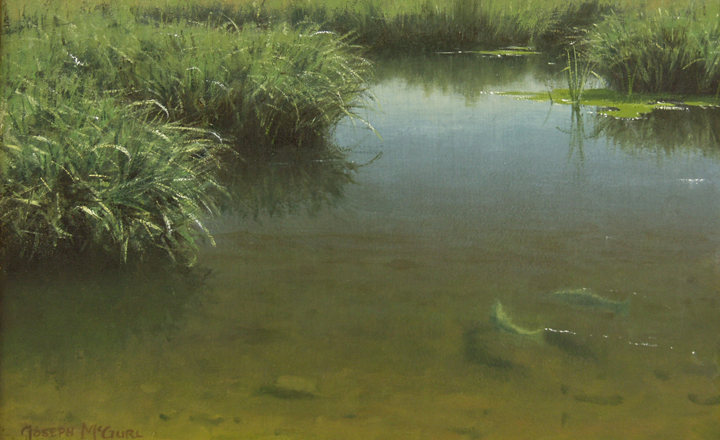
Transferring the fullness of our multidimensional experiences in the real world into a flat two-dimensional painting, which then communicates an idea through that image, are extremely abstract thought processes. This is because the only relationship the painting has to the real world is that if you could eliminate all your other senses, close one eye, and squint at the subject, the painting would look somewhat similar to the real world.
If I were using photography, the camera would be doing some of this amazingly abstract “thinking and interpretation” for me because it would have already made a flat two-dimensional image of my subject. I would then be making a flat image into another flat image. This would eliminate the sense of magic that I experience when I transfer my real world experiences directly from my mind into a painting or drawing. This sense of magic is one of the reasons I knew at an early age that I wanted to be an artist, and I still find it enormously rewarding.
Perhaps the most obvious reason photography doesn’t work for my particular type of art-making is that I consider myself a Contemporary Luminist. This means that, in a way philosophically similar to the nineteenth-century Luminists and Transcendentalists such as Emerson and Thoreau, I have a special interest in the inherent spiritual implications of the natural world, and most important, of light.
My interest in the physical nature of light has also led me to recognize its dominance in the realm of physics. For this reason, I must paint actual light rather than a photographic representation of it. Light is composed of photons, but because a photograph has no photons it is impossible to “paint light” from a photograph. If I were painting from a photo, I would be matching pigments to the photographic image rather than interpreting true light.
Staying with the physical aspects of my subject, my paintings are also a study of light, form, space, and color interpreted through the painted image. A photograph has only color, but no real light, form, or space. Again, if I used a photo, I would be matching colors as opposed to interpreting true reality. Most importantly, the spiritual significance of light for Luminist painters is paramount because light provides a portal to the sublime. As photos have no inherent light, they cannot possess any of the spiritual significance of real light. For my physical and spiritual conceptions of light, using photos would be similar to idolatry, where one worships an image of god rather than the real god.
If we paint from life, our subject is the real world, which exists in time and space with all its distortions and many dimensions. Our real world subject is also responding to gravity and the other forces of nature and is composed of subatomic particles engaged in a frenzy of activity.
Because all of this is so ingrained and subtle to our senses, we are not superficially aware of these aspects of reality; however, if our subject were not responding to these laws of physics, our universe would cease to exist in its present state. I believe that these characteristics are in many ways subconsciously reflected in artwork produced from life, and that this is one of the reasons that art produced from life looks different from art produced from photographs—the image in a photograph simply doesn’t possess any of these essential features of our universe.
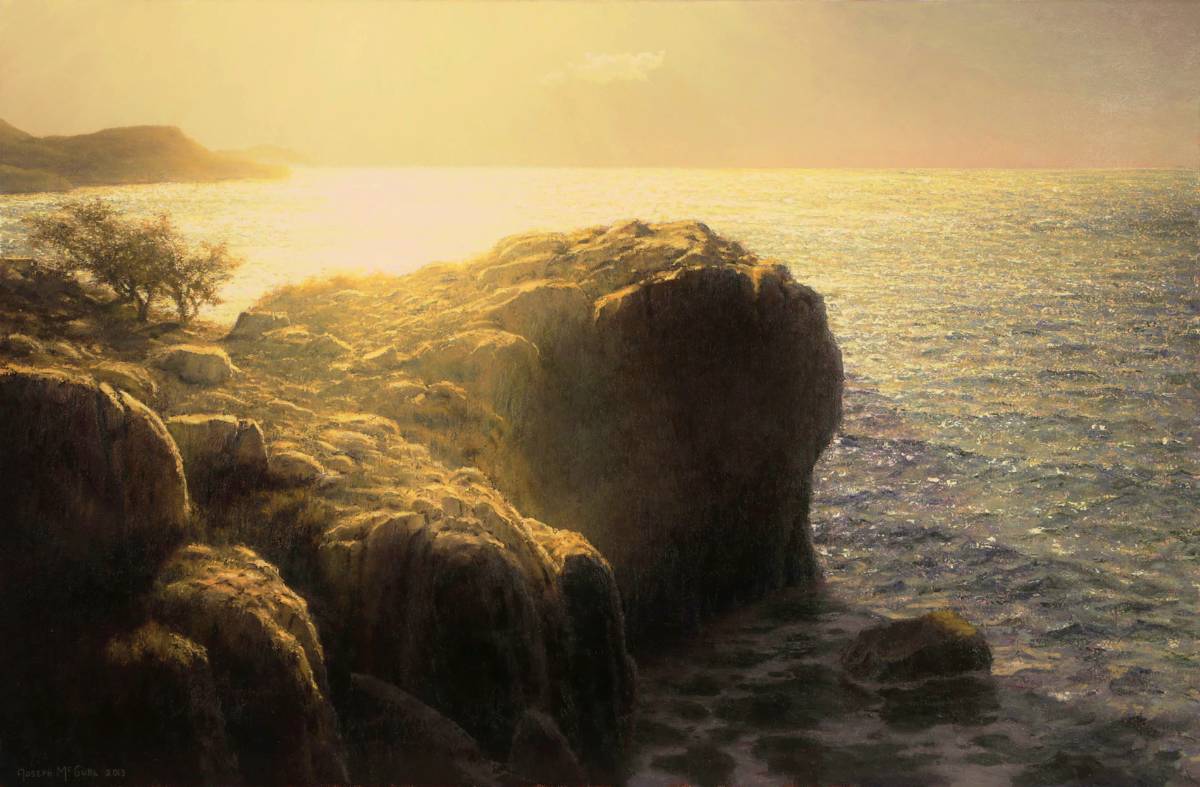
Physics is showing us that our universe has an ultimate reality that humankind is incapable of experiencing. However, each species can experience some slice of this reality in their unique way. For instance, because of its blindness and echolocation abilities, a bat’s conception of the world is much different than a human’s. A camera interprets what it “sees” in its own unique way, which is also different than the way you and I see. The way we experience and interpret reality is the very thing that makes us human.
My art is concerned with how the human mind and our senses interpret reality, and I do not want it influenced by a device. Even using photos in a minimal way would incorporate a foreign element into my art, and it would distort my perceptions. By using only observation, memory, and imagination, I am creating art that has only one filter: me. The camera can see things that the eye cannot and vice versa.
As an example, we’ve all seen paintings of rippled water painted with great complexity and photographic accuracy. This type of rendering is impossible to paint by eye because the artist has chosen a split-second photographic depiction of water from which to work. Our eyes see detail with the fovea centralis, which is located at the rear of the eyeball. It allows our eye to focus, but it is only able to focus on a very small spot at a time. Because of this, we see sequentially, and therefore cannot focus on the entire scene simultaneously.
Because ripples are constantly moving and are influenced by adjacent ripples, we cannot record an expanse of them the way a photograph can. Portraying water in this manner is impossible without the camera, and this way of rendering water did not exist before photography.
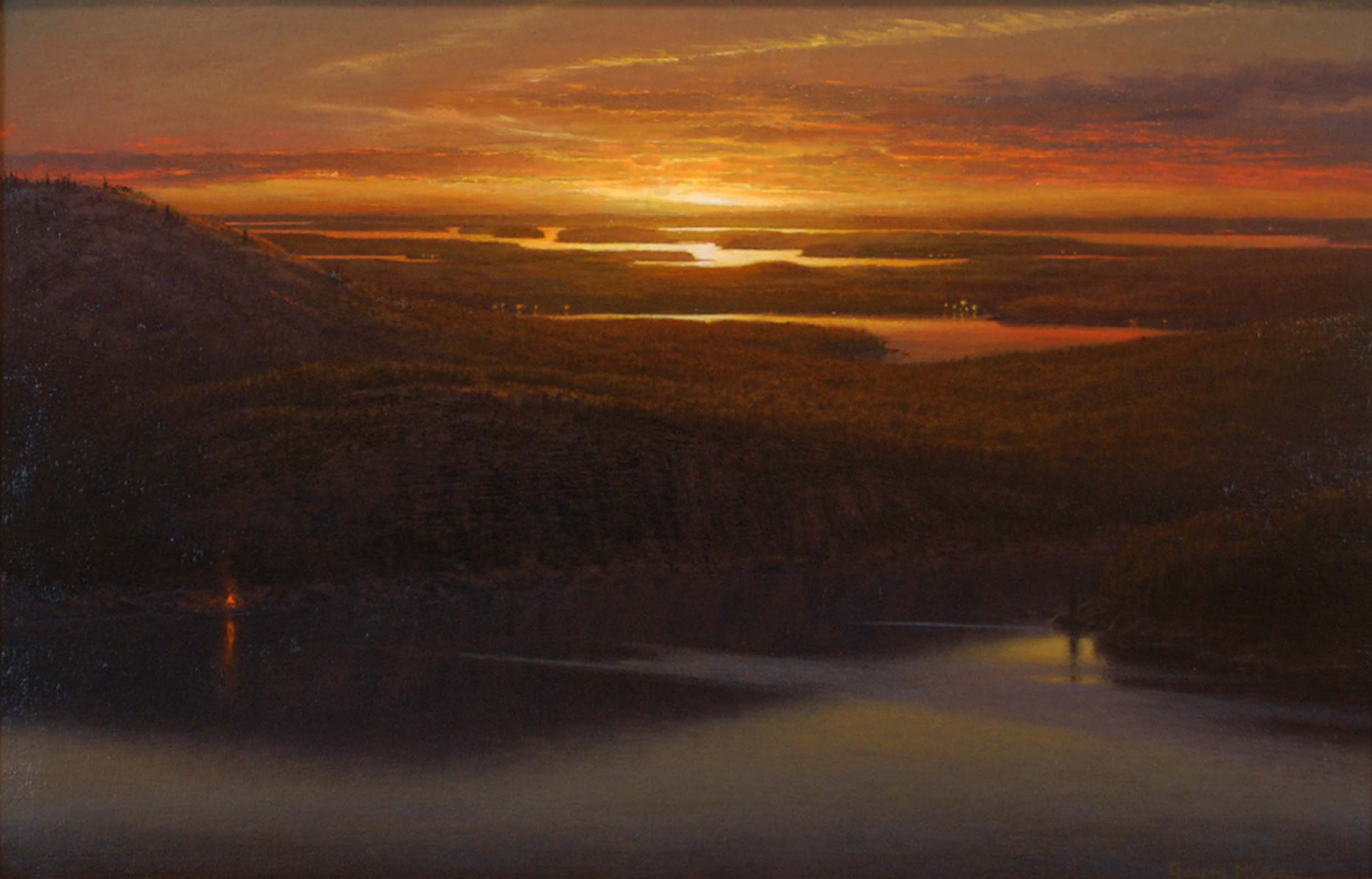
There are many other examples where the art produced using photographs looks different from art painted by eye, such as the way a photograph is simplified when making it into a painting. But if you squint at it, the painting still retains the essence of a photograph. Other changes include the unique composition, cropping, coloring and values introduced to painting since the advent of photography.
Though I attempt to achieve a high degree of fidelity to nature in my art, it remains within the realm of my emotional and humanistic interpretations of the reality I experience. By keeping my process simple and the connection to the source of inspiration as direct as possible, I believe I am able to make a deeper connection to the world I am portraying.
Thank you for allowing me to indulge in the overuse of personal pronouns, and remember that because we are all working abstractly, there is no absolute truth. Whether choosing to use a camera or not, all artists work in the manner that is right for them because it best fulfills their personal objectives.
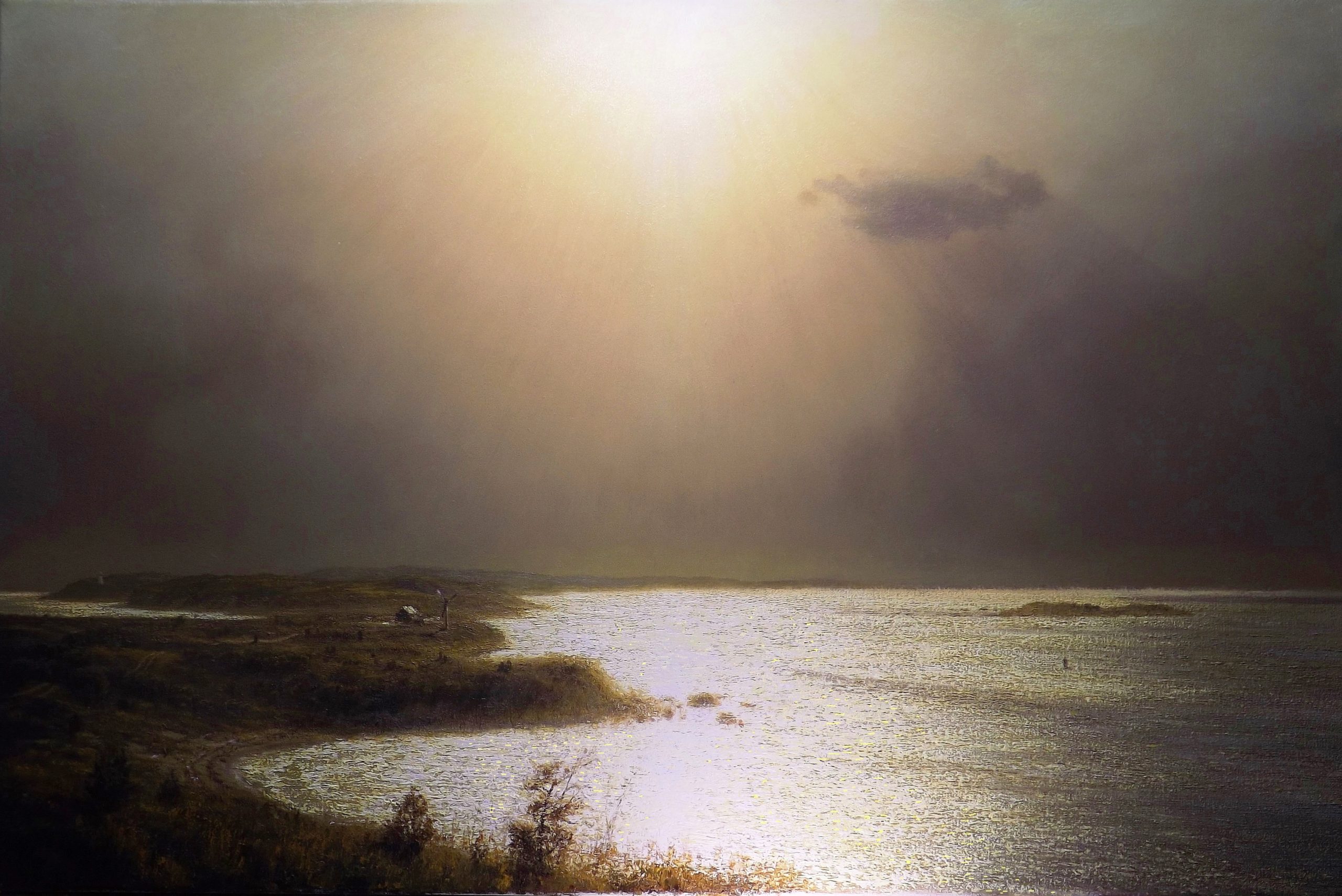
Learn more about Joseph at: www.josephmcgurl.com.
Learn more about painting realism landscapes through Joseph McGurl’s PaintTube.TV workshops: Painting Light and Atmosphere and Advanced Landscape Painting (available as a combo set with over 25 hours of in-depth instruction here).
Browse RealismToday.com for more articles about the art of painting realistic landscapes.


